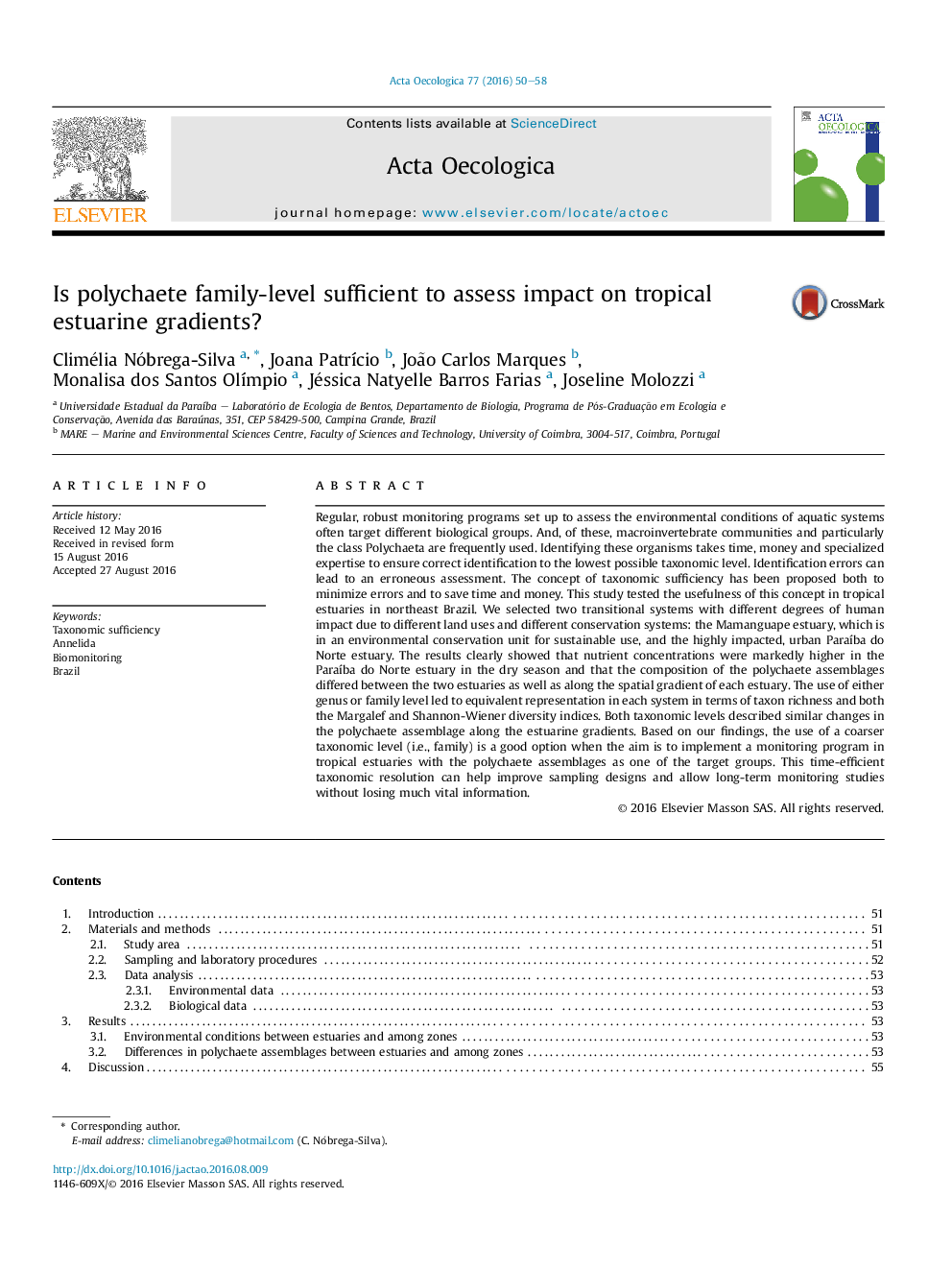| Article ID | Journal | Published Year | Pages | File Type |
|---|---|---|---|---|
| 4380590 | Acta Oecologica | 2016 | 9 Pages |
•Human impact on tropical estuaries can be determined using polychaete families.•Polychaete assemblages differed along the estuarine gradient in both estuaries.•The dominant genera are typical of organically enriched environments.•Equivalent representation occurred with genus or family level in each system.•A coarser taxonomic resolution is useful in regular monitoring programs.
Regular, robust monitoring programs set up to assess the environmental conditions of aquatic systems often target different biological groups. And, of these, macroinvertebrate communities and particularly the class Polychaeta are frequently used. Identifying these organisms takes time, money and specialized expertise to ensure correct identification to the lowest possible taxonomic level. Identification errors can lead to an erroneous assessment. The concept of taxonomic sufficiency has been proposed both to minimize errors and to save time and money. This study tested the usefulness of this concept in tropical estuaries in northeast Brazil. We selected two transitional systems with different degrees of human impact due to different land uses and different conservation systems: the Mamanguape estuary, which is in an environmental conservation unit for sustainable use, and the highly impacted, urban Paraíba do Norte estuary. The results clearly showed that nutrient concentrations were markedly higher in the Paraíba do Norte estuary in the dry season and that the composition of the polychaete assemblages differed between the two estuaries as well as along the spatial gradient of each estuary. The use of either genus or family level led to equivalent representation in each system in terms of taxon richness and both the Margalef and Shannon-Wiener diversity indices. Both taxonomic levels described similar changes in the polychaete assemblage along the estuarine gradients. Based on our findings, the use of a coarser taxonomic level (i.e., family) is a good option when the aim is to implement a monitoring program in tropical estuaries with the polychaete assemblages as one of the target groups. This time-efficient taxonomic resolution can help improve sampling designs and allow long-term monitoring studies without losing much vital information.
